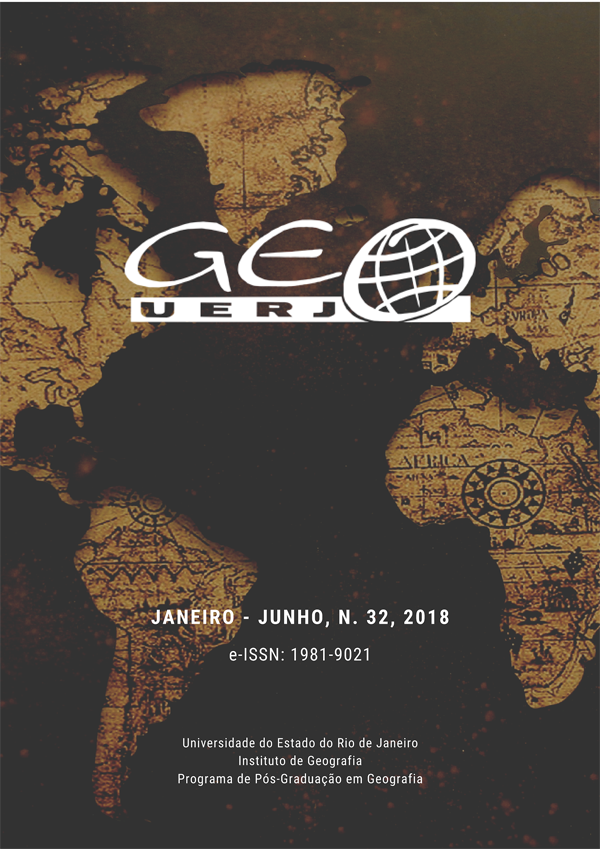IDENTIFICAÇÃO DE ÁREAS VERDES URBANAS A PARTIR DE IMAGENS DE SATÉLITE WORLDVIEW-II: O CASO DAS PRAÇAS NA CIDADE DE MONTES CLAROS – MG / IDENTIFICATION OF URBAN GREEN AREAS FROM SATELLITE IMAGES WORLDVIEW-II: THE CASE OF SQUARES IN THE CITY OF MONTES CLAROS - MG
DOI:
https://doi.org/10.12957/geouerj.2018.31026Palavras-chave:
Imagens de Satélite, Praças, Áreas verdes, Espaços livres.Resumo
A existência de áreas verdes dentro da área urbana influencia diretamente na melhoria das condições ambientais e sociais. Partindo desse pressuposto, as discussões aqui expostas visam classificar as praças como áreas verdes ou espaços públicos, baseados em suas funções apresentadas, tais como, função ecológica, estética, lazer e área permeável de 70%. Assim sendo, tendo como foco principal a cidade de Montes Claros, o presente trabalho busca aplicar os conceitos, métodos e técnicas que auxiliem na identificação, classificação, quantificação e mapeamento das praças da cidade, definindo as mesmas como área verde ou espaço livre. A metodologia utilizada na delimitação e classificação das praças baseou-se na revisão da literatura e na utilização de imagens de satélite com alta resolução espacial, assim também como trabalhos de campo. Constatou-se que as praças consideradas como áreas verdes estão dispostas de forma heterogênea na cidade, ocupando desde loteamentos com condições mais precárias até locais mais dinâmicos e estruturados, observando que ainda existem alguns locais que não dispõem dessas áreas. Conclui-se que, a cidade de Montes Claros possui cerca de noventa e seis praças, destas, oitenta e uma foram classificadas como espaços livres devido apresentarem parte ou nenhuma das funções para ser designada como área verde e dezesseis foram consideradas como áreas verdes por apresentarem todas as funções.
Downloads
Downloads
Publicado
Como Citar
Edição
Seção
Licença
Os Direitos Autorais dos artigos publicados na Revista Geo UERJ pertencem aos seus respectivos autores, com os direitos de primeira publicação cedidos à Revista. Toda vez que um artigo for citado, replicado em repositórios institucionais e/ou páginas pessoais ou profissionais, deve-se apresentar um link para o artigo disponível no site da Geo UERJ.

Os trabalhos publicados estão simultaneamente licenciados com uma Licença Commons BY-NC-SA 4.0.


